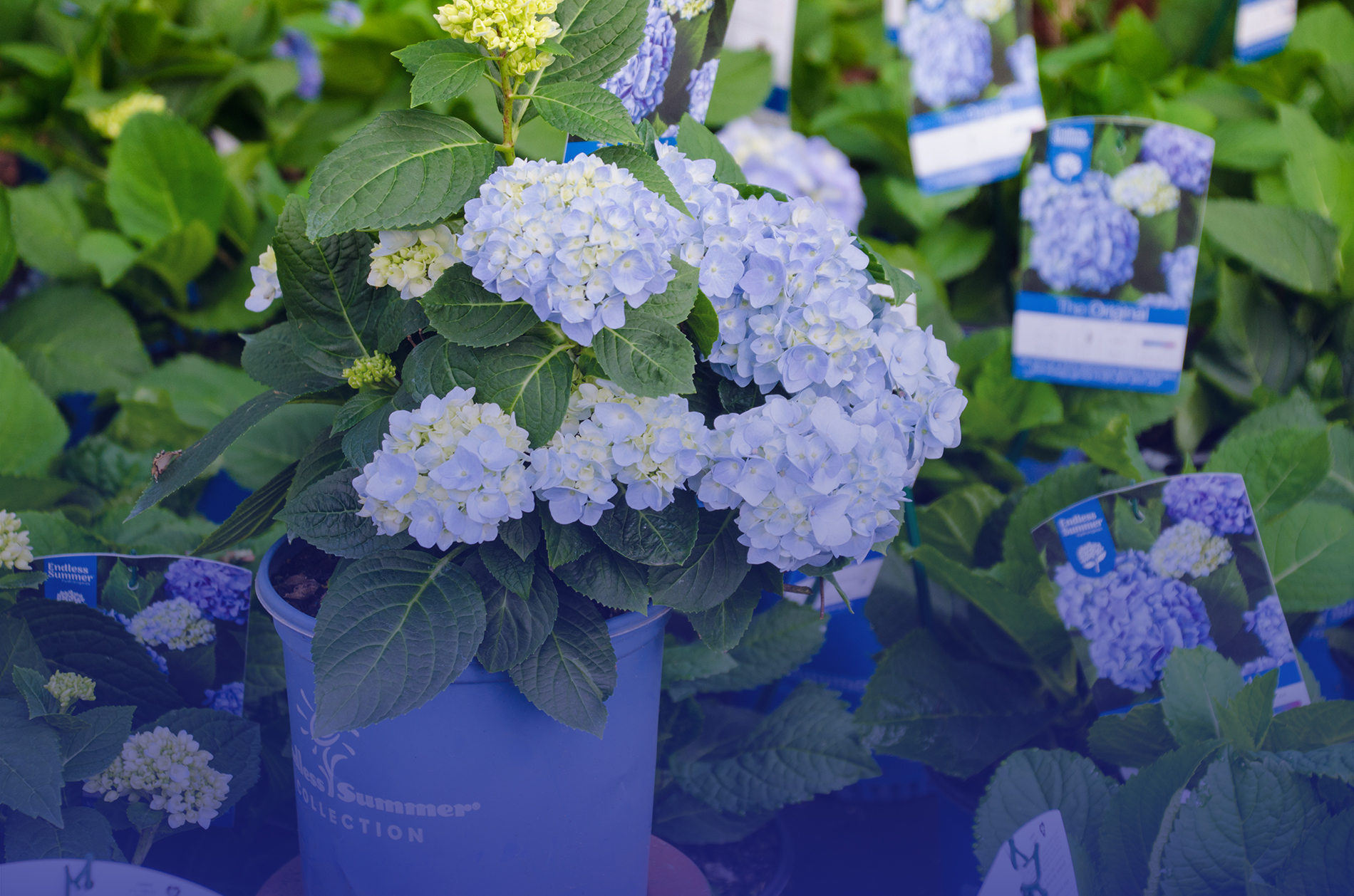
Hydrangeas are a classic for Mother’s Day, and with good reason.
The soft, colorful blooms look like surreal paintings, adding splashes of blue, pink, and purple to the garden, right around Mother’s Day each year.
Luckily for us, they grow beautifully in the south-east. This Mother’s Day, treat the moms in your life
to a living bouquet that will keep on blooming for years to come.
Check out our 5 favorite varieties, our full stock list and grow tips on how to care for hydrageas
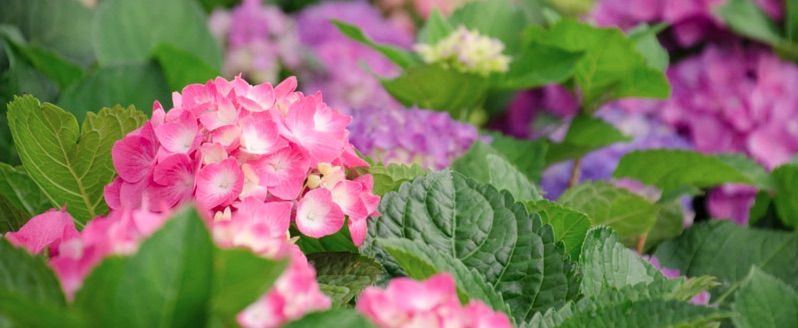
Current Stock for Mother’s Day 2021
Endless Summer Original
Endless Summer Blushing Bride
Endless Summer Bloomstruck
Endless Summer Twist n Shout
Endless Summer, Summer Crush
Blue
Charm
Variegated
Penny Mac
Limelight
Little Lime
Native Oakleaf
Blue Hydrangea
An antique selection that has graced southern gardens for generations. This is the huge mop-head your grandmother may have grown. Durable plants produce a bountiful flush of giant flowers in May and June. Blooms are blue in acid soil and pink in basic soil.
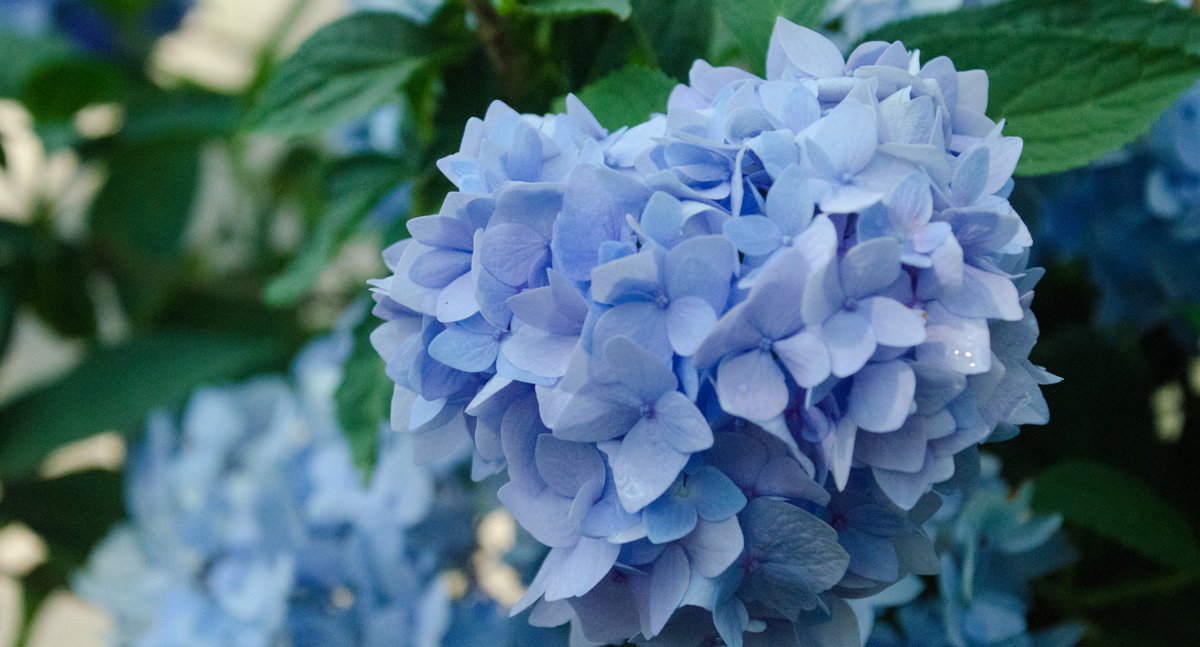
Endless Summer Bloomstruck
A modern, reblooming hydrangea variety that can produce flowers from May until frost! Large mop-head blooms are a rich purple in acid soil and deep pink in basic soil. The thick leaves of this variety are more disease resistant than most hydrangeas.
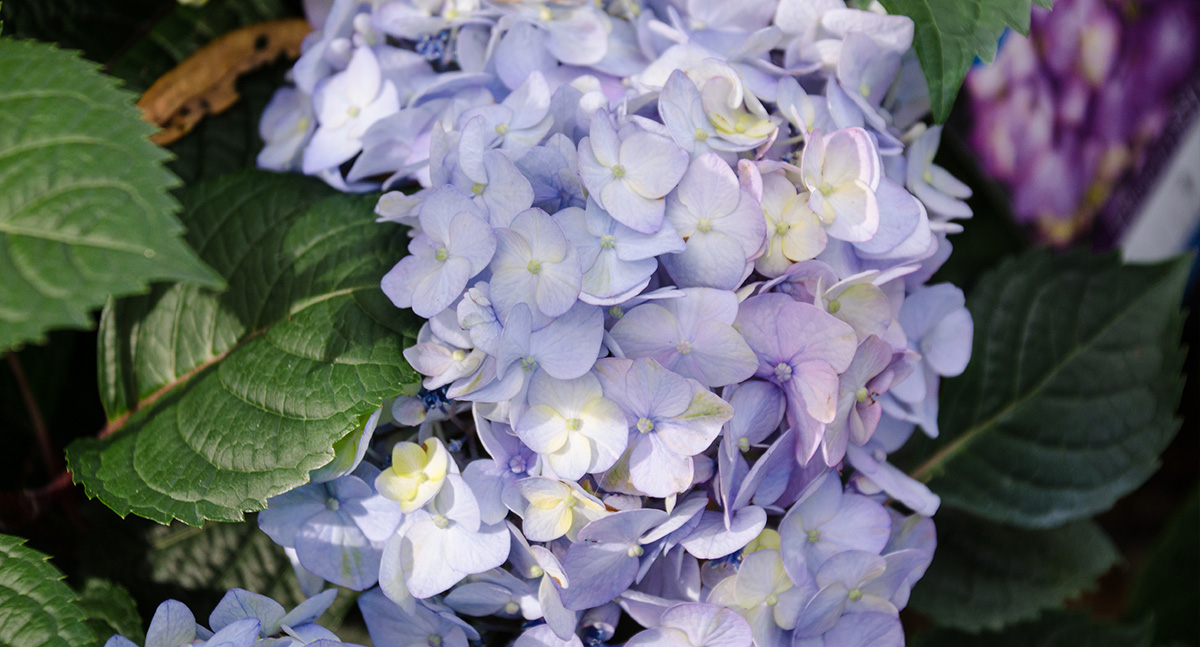
Limelight
A whole different kind of hydrangea, Limelight prefers full sun and produces a huge display of creamy white, mop-head type flowers in early summer. These large, bold plants are balanced by the soft color and elegant form of the lovely blooms.
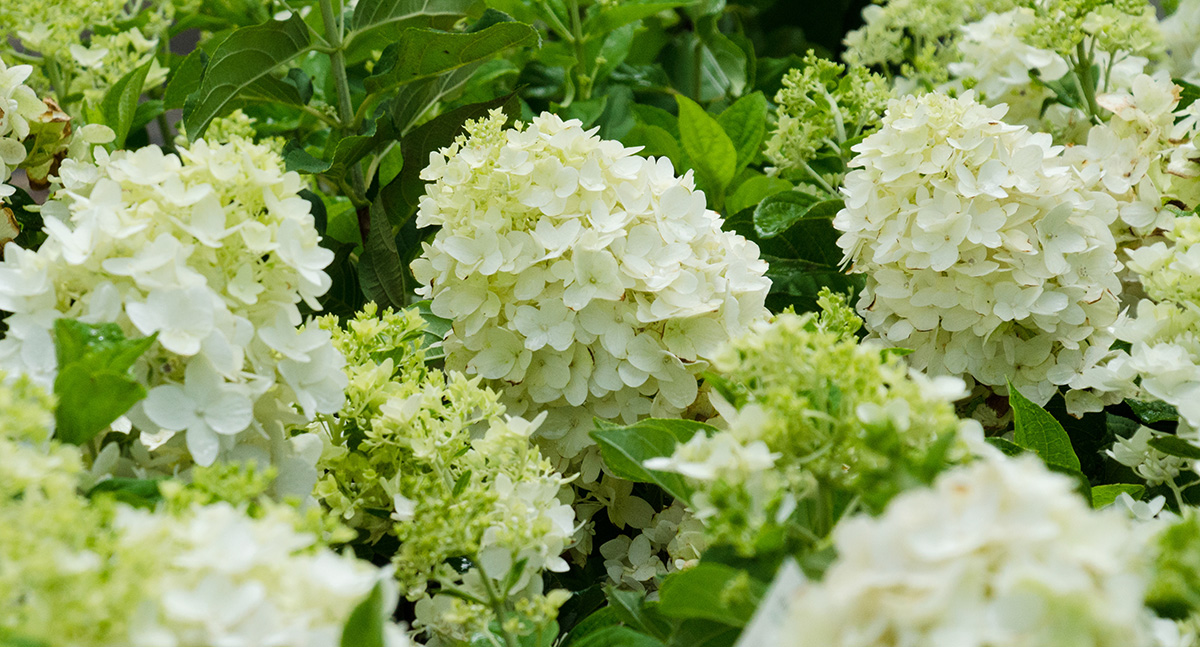
Endless Summer, Summer Crush
This modern, reblooming variety has a strong tendency to produce rich, bright pink, mop-head flowers. In highly acid soils the blooms will shift to an electric purple that practically glows in the dark!
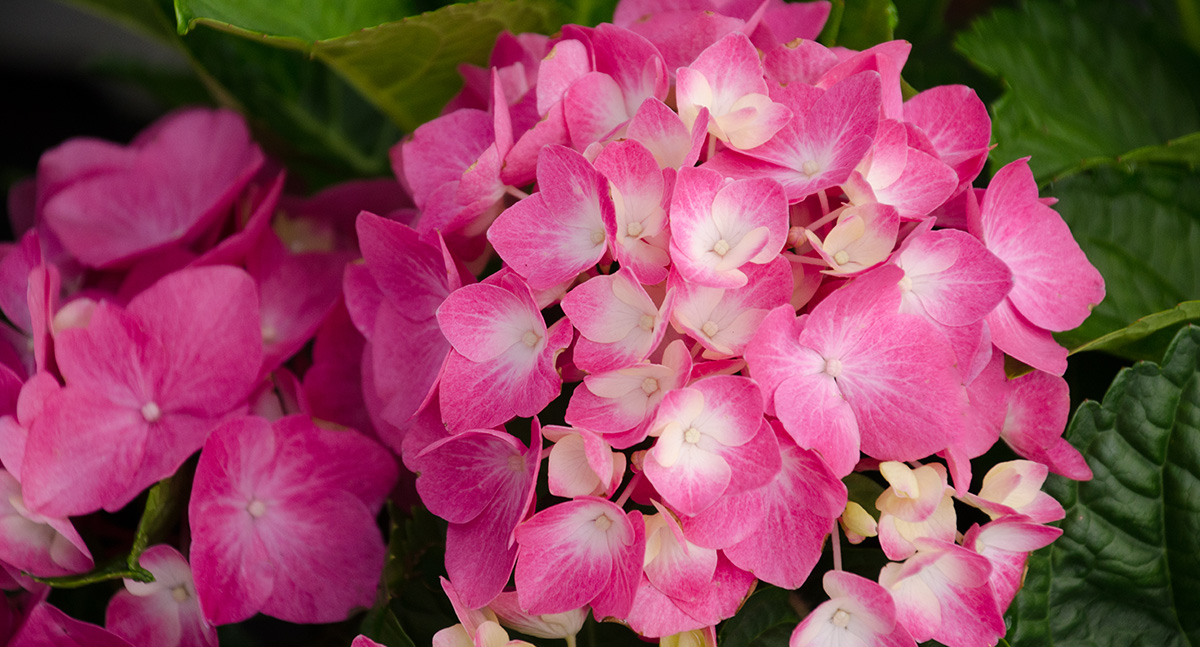
Penny Mac
The blooms look just like the classic Blue mop-head, but this variety reblooms from May until frost. A truly improved, modern twist on the vintage classic.
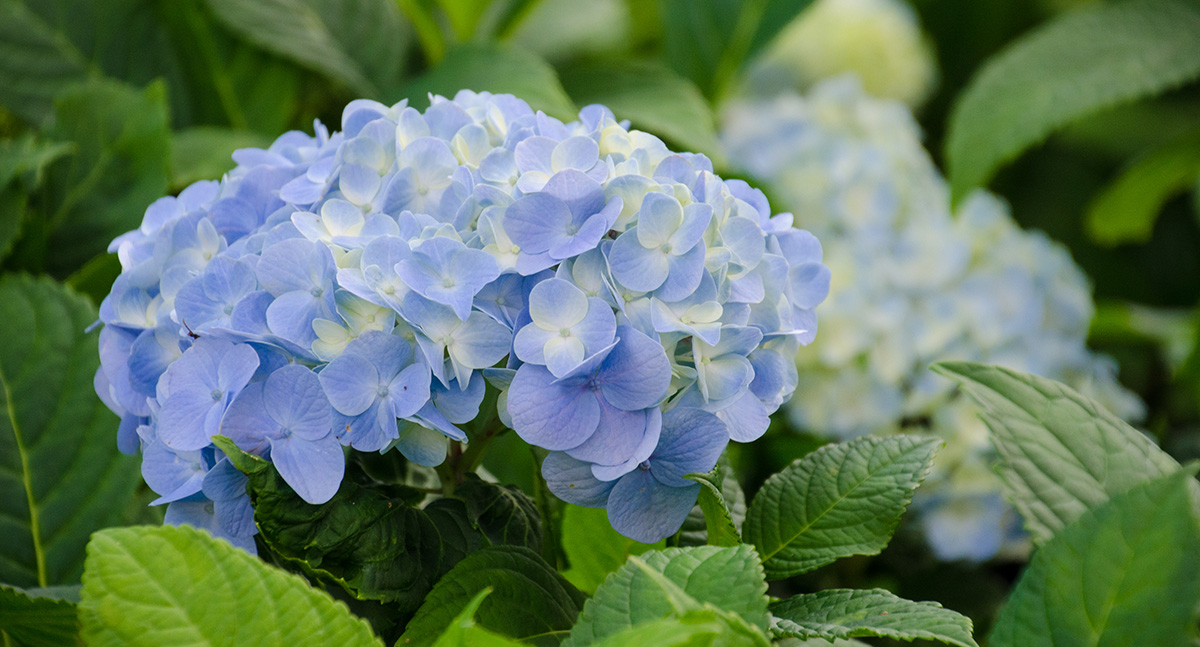
Growing Conditions for Hydrangeas
The best lighting condition for traditional mop-head hydrangeas is bright shade, like the dappled light found under a mature oak or pine tree. Hydrangeas benefit from a few hours of direct sun in the morning, but afternoon sun is too harsh and should always be avoided. Limelight, Little Lime, and the Native Oakleaf Hydrangeas are a bit different. All 3 look best with more direct light, and even handle full sun if given enough water.
Getting the Most from Reblooming Hydrangeas
Old-fashioned hydrangeas spend all year building up energy for one big round of blooms each year. This once annual expenditure of energy means they are relatively easy-care and low-input. On the other hand, modern reblooming hydrangeas are asked to produce blooms for a whopping 6 months! Reblooming hydrangeas offer vastly more color than traditional varieties, but they need your help to pull it off. Reblooming hydrangeas should be fertilized like roses, every 4-6 weeks from the time new growth begins in spring, until early fall. Use an acidifying fertilizer like HOLLY TONE to keep/encourage blue or purple flowers, or a pH neutral fertilizer like PLANT TONE or OSMOCOTE to retain the pink color in basic soils. Don’t forget to mulch all hydrangeas heavily, and keep them well-watered during hot weather.
When to Prune
Old-fashioned hydrangeas, that bloom just once per year, should be pruned in the late summer, just after they finish flowering. They bloom on old growth and should be allowed to grow freely until they finish flowering again the next year. This once yearly pruning will maximize blooms! Reblooming hydrangeas flower on all new growth and can be cut whenever you like. This allows gardeners to maintain the shape and size of reblooming hydrangeas without sacrificing flowers.
Troubleshooting
The most likely problem you’ll see with hydrangeas in North Florida, is unquestionably, fungus. Sadly, our hot and humid weather inevitably leads to black spots on the leaves by mid-summer. If it’s just a few spots, I would simply tolerate it, but if it leads to a significant number of leaves dropping you may need to act. Fungicides are the main medicine, but there are many cultural practices that can help too. Try mild fungicides first like NEEM OIL and ORGANOCIDE, but you may need the stronger COPPER based products.
< What affects the colors of my hydrangea blooms? >
Fight Fungus Naturally with these 5 Tips
- Avoid getting the leaves wet when you water, just soak the ground.
- Water in the morning, so the leaves have plenty of time to dry before sunset. Leaves that get wet in the afternoon or evening will stay wet all night, which is the perfect place for fungus to set in.
- Site your hydrangeas where they get a few hours of direct sun in the morning which helps dry off their surrounding, making it less hospitable to fungus.
- Site your hydrangeas away from walls and buildings that block airflow, open spaces are best as the freely moving air helps to dry off leaves which prevents fungus.
- Remove and replace the mulch around your hydrangeas each winter with fresh mulch. This will remove the old hydrangea leaves that could pass fungus on to the new leaves next year.
*This article was written by Jonathan Burns (Tallahassee Nurseries Outdoor Manager, FNGLA Florida Certified Horticulture Professional)
informed by years of personal observations growing in the Tallahassee area.

